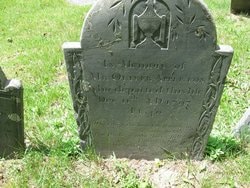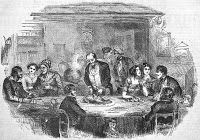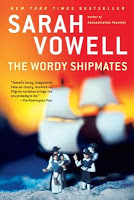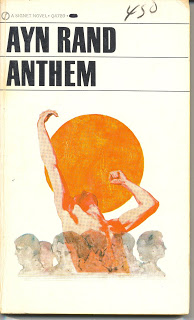Remembering Fathers in Hemophilia: Samuel Appleton
A tribute on Father’s Day to the first known father of a son with hemophilia in the Americas
by Richard Atwood
I search for intriguing stories about people with bleeding disorders. By discovering those stories, including historical ones, I always learn something valuable. Often, I find inspiration in the stories of other family members, as in the case of the Appletons, who were connected with the powerful origins of our country.

One father of a child with hemophilia was Major Samuel Appleton (1625–1696). His son, Oliver Appleton, was the first person identified with hemophilia to be born in the American colonies.1 Samuel spent a lifetime in public service fulfilling legislative, judicial, and military roles. He stuck to his principles about the illegality of improper taxation, and he remained calm in times of distress—during battle, and during the infamous Salem witch trials.
Samuel was only 11 when his family left England to settle in the Massachusetts Bay Colony in 1636. His father, also named Samuel, was one of the original settlers of historic Ipswich. The family owned a house and eight acres in town, and a 400-acre farm on the Ipswich River. 2
One of five children, Samuel grew up to help run the family farm and businesses. He married Hannah Paine in 1651, and they had three children. After his wife’s death, in 1656 he married Mary Oliver (1640–1698), a hemophilia carrier, and had eight more children, including Oliver in 1677. Oliver’s bleeding disorder was noted by family members, but probably not as a genetic condition. Only later, in retrospect, did family members realize the distinctness of the bleeding.
Due to periodic threats of Indian attacks, Samuel Appleton led the local militia. From lieutenant in 1668, he rose to the rank of captain during King Philip’s War, and commanded an infantry of 100 men. At the decisive battle near Hatfield along the Connecticut River in 1675, Samuel was commander-in-chief of more than 500 men. A turning point for the colonists, this battle proved that the Indian warriors could be defeated. During the fighting, a bullet passed through Samuel’s hair. If he had died then, his son Oliver with hemophilia would never have been born.
Samuel held several elected offices. As a legislator, he was a commissioner of Essex County in 1668. He was a representative of the General Court from 1669 to 1680. And he served on the Governor’s Council from 1681 to 1692. Appleton opposed the government of the colonial governor, Sir Edmond Andros. When in 1687 Andros levied a tax of one penny on a pound, the town of Ipswich refused to collect the tax, stating that it was against the rights of Englishmen for any taxes to be levied without consent of an assembly chosen by landowners, or “freeholders.” An arbitrary and illegal warrant was issued for the arrest of Samuel and other leaders in the opposition to the tax. Samuel took refuge in Saugus, where he stood on a rock and denounced the government. A Massachusetts historical marker now acknowledges the site as “Appleton’s Pulpit.” Refusing to apologize, Samuel was imprisoned in November 1687. He petitioned in January for his release due to his age and weakness, but wasn’t freed until March 1688, when he posted a 1,000-pound bond.
In 1689, during the coup of crown-appointed Governor Andros, Samuel and other leaders in the Massachusetts Bay Colony put Andros on a boat to the island prison in Boston Harbor. Colonial revolutionaries 100 years later simplified the opposition to taxes with the slogan “No taxation without representation.” But it’s important to remember that the ideas for the American Revolution began long before 1776: to be properly recognized, Ipswich adopted the motto “The Birthplace of American Independence 1687.”
Samuel Appleton served on the judiciary. He was a deputy to the Massachusetts General Court from 1668 to 1681. As a member of the Council of Assistants from 1681 to 1686, Samuel attended the examination of accused witches in Salem on April 11, 1692. His role may have been minor; he isn’t always listed as one of the seven judges. And apparently he did not serve as a judge in any of the trials that executed 20 alleged witches in 1692. On May 2, 1693, the first Supreme Court convened in Ipswich to try Andover residents charged with witchcraft. As a judge at that hearing, Samuel cleared everyone accused of witchcraft, ending the infamous witch trials and demonstrating his rationality. During the hysterical witchcraft proceedings in Salem, Oliver Appleton was a 15-year-old with hemophilia living at home in Ipswich.
The story of Major Samuel Appleton reveals essential information about colonial America. Some of our defining principles that we cherish today were sown by the colonists years before the revolution for independence. We need to honor those colonial leaders for their contributions, and remember that Major Samuel Appleton also raised a son with hemophilia.
1. “The Appletons: America’s ‘First Family’ with Hemophilia.” PEN, Nov. 2002.
2. That farm still exists today. Called Appleton Farms, it is the second oldest continuously run farm in America, now administered by the Trustees of Reservations, a nonprofit conservation organization in Massachusetts.
© 2016 LA Kelley Communications, Inc. Reprinted with permission. All rights reserved.







